7 Weight Loss Tips for Women (Non-Drastic)
Are you looking to lose weight to have more energy and feel more comfortable in your body? This article includes seven non-drastic and practical weight loss tips just for women.
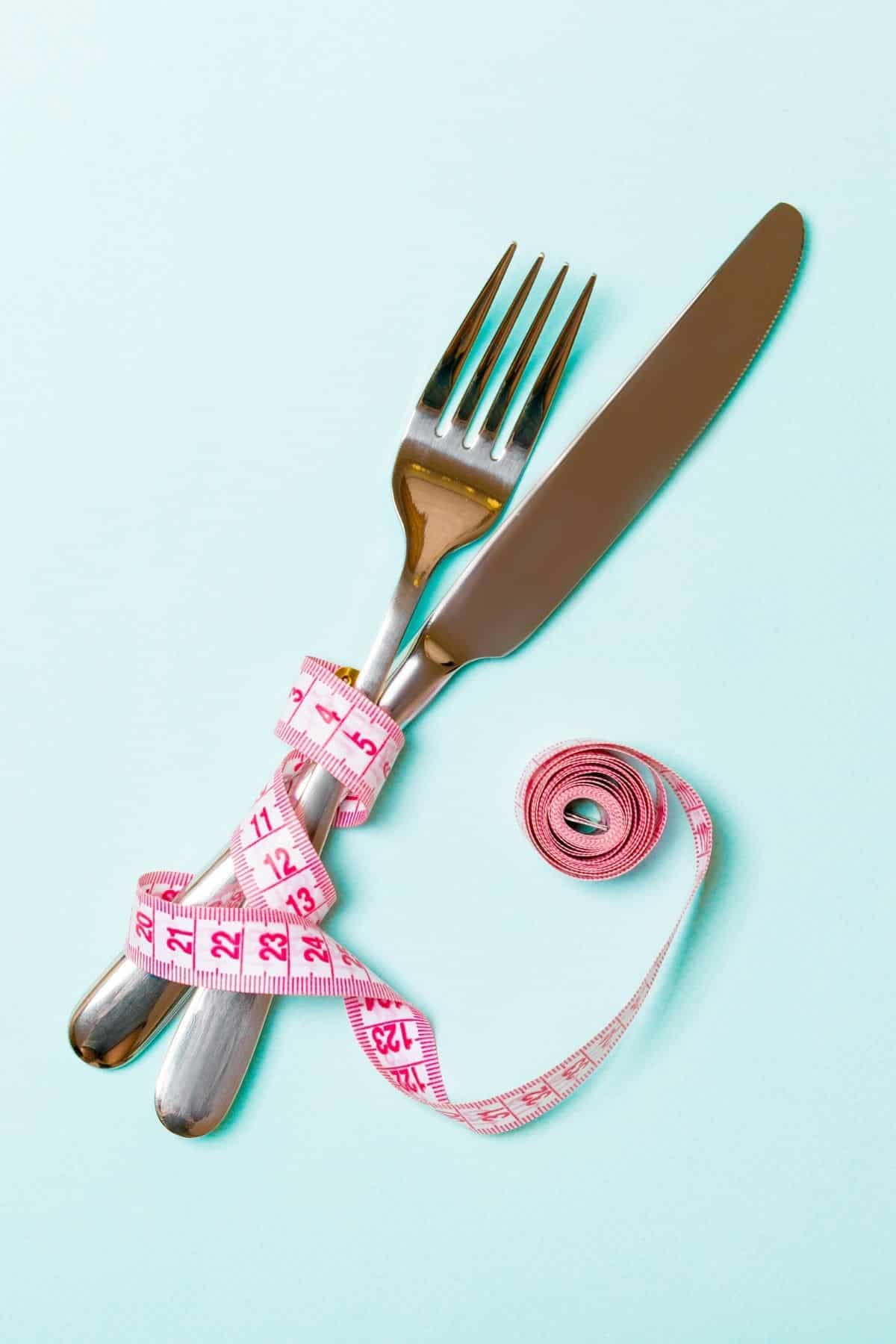
While dieting gets a bad rap, healthy and reasonable weight loss for many people is a worthwhile goal.
Nearly 40% of Americans are obese and even more may be overweight, with a less-than-optimal fat to muscle ratio. Getting rid of excess weight can help reduce fatigue, increase energy, reduce disease risk, and improve self-confidence.
But, it’s important when trying to lose weight that women don’t trigger eating disorders, upset hormone balance, reduce muscle mass, cause nutrient deficiencies, or increase stress. So, this article is devoted to non-drastic and practical weight loss tips just for women.
As always, please consult your healthcare provider to help determine if weight loss is appropriate for you, and what is the best diet or method for losing weight.
And, if you have an autoimmune disease, you might like my related article on weight loss tips with Hashimoto’s disease.
Weight Loss Tips for Women
1. Cut back on sugar
Cutting back on sugar can help promote weight loss and increase overall health.
Added sugars in foods such as in cookies and sweets can promote fat storage and disturb hunger signals. This is because people who regularly consume added sugars typically eat more overall because sugar intake lowers leptin production. Lower leptin levels lead to increased hunger and decreased satiety.
Foods with high sugar content also tend to be high-calorie foods, like desserts and sugar-sweetened beverages like sodas. Consuming these high-calorie foods can cause you to overconsume in relation to the amount of energy you expend.
Too much sugar will hinder your weight loss goals and mess with your blood sugar and stress hormones.
Sugar is an addictive substance that prompts cravings for more sugar. Because it increases hunger, food cravings, and fat storage, sugar can cause weight gain. Reducing or eliminating your sugar intake will help you lose weight.
And, just remember, that most people can have at least a few servings of fresh or frozen fruit a day. Fruit has natural sugars which are different from added sugars (see my article on natural sugars versus added sugars).
One practical way to cut back on sugar is to limit any treats to once a day. Or, try going cold turkey and eliminating any added sugars for a period of time. Then, monitor your weight and see if these changes help you reach your goals over time.
For help with reducing your sugar intake, be sure to check out my articles on sugar-free diet, how to do a sugar detox, and the best no-sugar foods.
2. Try a 4-week rules-based diet like Whole30 or Paleo
Diets such as Whole30 or Paleo can majorly reduce consumption of processed foods and junk food, so they are often naturally healthier and often lower in calories than eating the Standard American Diet. Even a subtle caloric deficit from one of these diets can help with weight loss.
As an added benefit, these rules-based “reset” diets often have large communities you can join (via online forums, in-person groups, or social media) to keep you motivated and promote success. Studies show that having support when you’re trying to lose weight can help improve the results.
Additionally, real food-based diet plans like Whole30 or Paleo can also help address other health issues including autoimmune disease. This is because of the focus on eating healthy foods and avoiding inflammatory foods.
Learn the differences between Whole30, paleo, and clean eating.
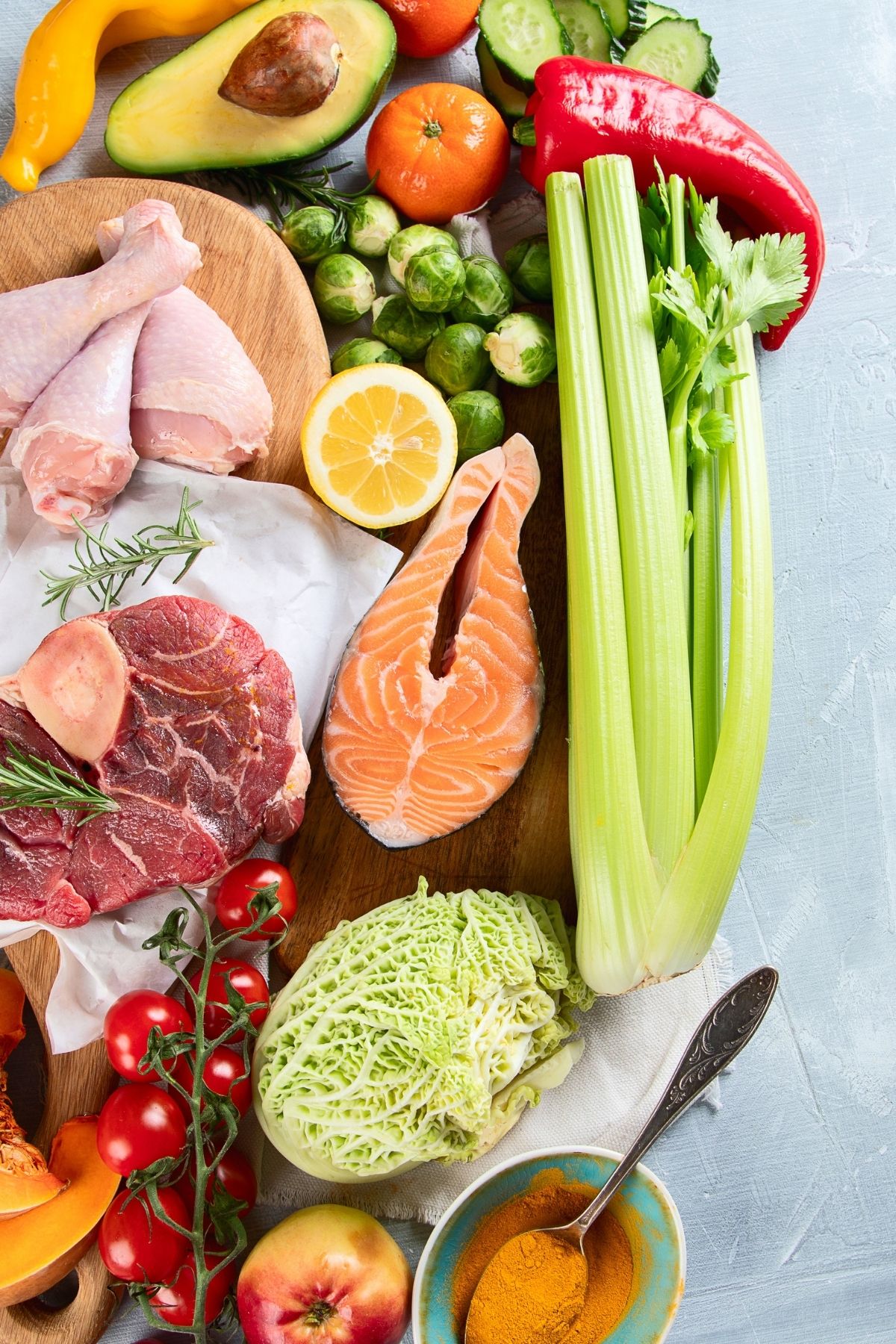
3. Eat more vegetables
Vegetables are high in fiber and water content, which will help keep you full longer. Vegetables are also generally low in calories which means they are excellent when you are trying to lose weight.
Vegetables of all colors help your body function optimally and decrease internal stressors than can cause weight gain.
Examples of easy ways to eat more vegetables include having a salad with lunch and dinner, replacing traditional pasta noodles with spaghetti squash or zucchini noodles, or adding cooked squashes into your soups and stews.
Some of my favorite vegetable-rich, low-carb recipes include Low-Carb Chicken Cacciatore, Ground Bison and Cauliflower Bowl, Instant Pot Cabbage and Sausage, and Gluten-Free Vegetable Frittata Without Dairy.
You might also like this article on the best green vegetables. These foods are part of a healthy diet and are also great for preventing heart disease and reducing high blood pressure. Green veggies also provide essential nutrients to help with long term health.
Or, try this Weight Loss Green Smoothie to help get your greens in a tasty drink form. Greens are a great weight loss smoothie ingredient to include in blended drinks.
4. Cook more at home
Restaurant and prepackaged meals are often made of processed ingredients that are designed to taste good. These hyperpalatable foods can lead to overeating and weight gain.
Cooking at home allows you to control the ingredients and portion sizes. Putting a reasonably sized portion on your plate rather than an oversized portion (as they do in restaurants) can help you tune in to your feelings of fullness (mindful eating). This way you stop eating when you’re full, not just when your plate is empty.
There are a lot of other reasons to cook more at home, including saving money and having control over the quality of ingredients. For instance, when you cook at home, you can use olive oil instead of vegetable oil. You can also choose whole grains over processed carbs.
If you are new to home cooking, then be sure to check out my articles on the safest cookware, how to eat clean, and my No Sugar Diet Meal Plan.
5. Eat balanced meals and snack only when needed
Eating large enough meals with a proper balance of lean protein, healthy fats, and complex carbohydrates will ensure you’re satisfied until your next meal. A balance of macros is part of healthy eating and any good weight loss plan.
Skip the overly restrictive diets like keto or vegan unless you are advised by a doctor to follow one of those plans for health reasons. See my articles on the dangers of intermittent fasting for women and the risks of a vegan diet.
It’s also good to be aware of your snacking habits. Do you snack out of boredom? Does turning on the TV make you reach for the chip bag?
A good rule when trying to lose weight is to eat three meals on a schedule and to only eat a snack when you are too hungry to wait until the next meal time. This will help you limit your calorie intake and consumer fewer calories overall.
Get my tips on how to eat healthy on a budget. You might also like my printable Clean Eating Food List.
6. Eat more protein at breakfast
Eating protein at breakfast can calm your insulin response so you don’t crash an hour later and reach for a snack. Eating a protein-rich breakfast will also help you feel satiated so you’re less likely to overeat in the evening.
It can be challenging to get enough protein at breakfast, but there are ways! Try using a clean protein powder to make a healthy smoothie. Or, try this Strawberry Protein Smoothie recipe that includes 25 grams of protein.
Other ideas including having a Protein Coffee or trying this recipe for Overnight Protein Oats.
And, of course, breakfast can be as simple as eating the leftover from the night before. Just try to make sure you get a good serving of protein with your morning meal.
7. Keep a food journal
Keeping a food journal is a great way to improve mindfulness and monitor your weight loss progress. You can use a journal to track portion sizes and macronutrient ratios, even if you don’t track the exact number of calories.
A food journal (or an online digital app) can help you become more mindful of how much you are eating, what makes you feel satiated, and what is most effective for your weight loss.
After all, if you are going to lose weight, you want to do it in a healthy and sustainable way that supports your mental health. Getting in touch with how your body feels and how your eating habits affect your overall health is an important step to long-term success.
Do You Need to Lose Weight?
Before you even think about dieting, try to determine if you actually do need to lose weight.
Some valid reasons to lose weight include:
- Your doctor has advised you to lose weight,
- Your BMI is over 25 or in the overweight or obese categories (see this BMI calculator),
- Your healthcare provider has suggested that losing weight will help you manage symptoms such as chronic illness, joint pain, or other health issues.
These are all excellent reasons to consider trying to reduce your weight or body fat.
And, some reasons why you should NOT consider going on a diet include:
- You want to weigh a certain weight that is unrealistic for your life now (i.e. you are trying to reach your high school weight),
- you are planning to use extreme measures or you are recovering from an eating disorder,
- you want to look like someone you saw on social media,
- someone is pressuring you to lose weight when you don’t need to lose weight.
The truth is that most modern societies put an unfair and unrealistic pressure on women to look a certain way.
But, healthy bodies come in all shapes and sizes and thin does not necessarily mean healthy! Additionally, thinner is not more beautiful.
The best reason to try and lose weight is that you are overweight or obese and you want to improve your overall health.
If you find yourself struggling with body image issues or you can’t stop wanting to lose weight for societal reasons, then please do consult a therapist to help you develop a more balanced body image.
But, again, for women who do need to lose weight for health reasons, then here are some realistic and practical tips to help reach your goal.
Weight Loss FAQs
Keep in mind that losing weight fast is often not the best way to keep the weight off. You can lose weight quickly by drastically cutting calories (often, starving yourself) but once you stop the low-calorie diet, you’ll gain the weight back.
Still, you can see results in as little as 2-4 weeks on a healthy weight loss diet. The key is to not starve yourself, but to instead reach for naturally lower-calorie whole foods that will provide you with nutrients and satiate you. Feeling satisfaction with your diet is key to maintaining it.
Combining your whole foods diet with moderate exercise and physical activity (walking, weightlifting, strength training, and yoga) can accelerate weight loss. A slight calorie deficit is helpful for weight loss, as long as you don’t feel tired and hungry throughout the day.
How much weight you can lose is very individual and dependent on a lot of factors. Losing 1-2 pounds per week is considered healthy and sustainable for most women.
So, while you could feasibly lose more than that, it would not be healthy and you would likely not be able to maintain it. Don’t forget that other factors like stress, lifestyle, sleep, and underlying health conditions will affect your weight loss.
There is nothing that says it is definitely harder for women to lose weight. Weight loss is usually more about genetics, lifestyle, and diet than about gender.
However, some women struggle to lose weight in comparison to their male partners. This is because women are biologically meant to have more body fat.
The female body can be resistant to weight loss efforts because it perceives caloric deficits as stress. In fact, women who are under a certain weight or body fat percentage may lose their menstrual cycle. Fat storage is a protection mechanism for all humans, but especially for the female body. Read more about what is the best diet for fertility.
Finally, women are more likely than men to have thyroid problems such as hypothyroidism, which can cause weight fluctuations.
If you find you simply can’t lose weight, then you might need to check with your healthcare provider to see if there are any other medical reasons for this happening.
Without the weight-managing effects of estrogen, menopausal women may struggle with weight gain. Hormone therapy has proven to be very effective for many women, not just for weight management, but for mood as well.
If you are perimenopausal, menopausal, or have severe estrogen deficiency, hormone therapy may help you lose excess weight. Be sure that you’ve tried healthy weight loss and checked for underlying conditions first, however.
You really need to be careful with weight loss supplements, as they can do more harm than good. Some of the common supplements for weight loss include green tea extract, probiotics, and grapefruit essential oil. Matcha tea also has some research showing it can help with weight loss, but you need to be careful not to prepare it with sugar.
Don’t Miss These Helpful Healthy Articles!
Conclusions
Women have unique challenges when trying to lose weight, including maintaining a healthy hormone balance and not triggering disordered eating patterns. This article includes 7 healthy weight loss tips that are non-drastic and practical.
Don’t forget to join my newsletter list to get exclusive clean eating recipes and tips. The newsletter is 100% free with no spam; unsubscribe anytime.
About the Author: Carrie Forrest has a master’s degree in public health with a specialty in nutrition and is a certified holistic nutritionist. She is a top wellness and food blogger with over 5 million annual visitors to her site. Carrie has an incredible story of recovery from chronic illness and is passionate about helping other women transform their health. Send her a message through her contact form.
Note: this post is for informational purposes only and is not intended as medical advice. Please consult your healthcare provider for recommendations related to your individual situation.


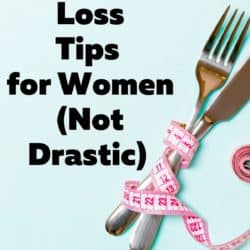
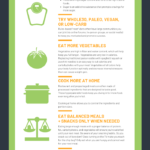

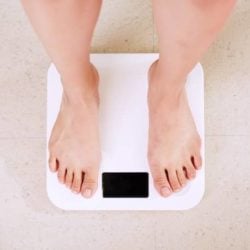

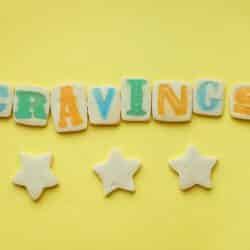














Thank you l like your article so much
Please l would like to ask what food should blood type a+ take to avoid problems.
Thanks
.